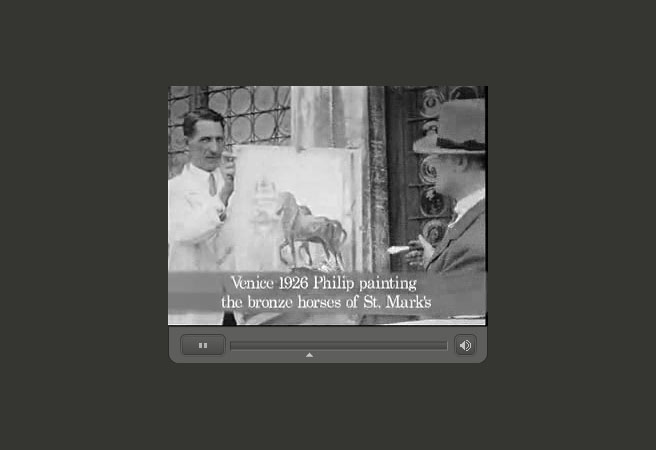My friend Josh showed me this website with old footage of Philip Alexius de László painting from life. Above is a still from a short film showing de László painting a plein air sketch of the (pilfered) horses on the cathedral of St. Marks.
The second film shows de László painting a half-length portrait. He steps back a lot, but not far enough to really sight-size. Its interesting how much he uses the mahl stick. There is a lot of information on his medium (poppy oil -who would have guessed?), colors, and technique on this page.
The website tells the story of how they got so much footage of de László painting:
In 1926, when de László painted George Eastman, whose portrait by de László is at the Memorial Art Gallery of the University of Rochester, U.S.A, he was given one of the first motion picture cameras, the Ciné-Kodak model B, introduced in 1925. From then until de László’s death in 1937, the artist, his sons and his studio assistant Mr. Harwood filmed a unique record of his life and work on 16mm film, which was sent to America to be processed. He was filmed painting in his studio at 3 Fitzjohn’s Avenue, with his sitters in his garden and at leisure with his family in many parts of the globe. So many of his patrons with whom he was friends are represented: most notably Lord Devonport, the Duc de Gramont, and Baron Schröder’s family at their home Dell Park. The film also contains unique footage of de László painting a model from Lady Duff-Gordon’s fashion house “Lucile” for the Gaumont British Cinema Company (November 1928) and the bronze horses on the façade of St Mark’s cathedral in Venice (1926) . According to Etherington-Smith and Pilcherin’s The It Girls, Elinor Glyn had been filmed by George Eastman himself while de László was painting her in 1912.
All the surviving film has been transferred to video and more recently onto CDs to preserve it.
The dvd with the footage would be facinating to get a hold of, I’m going to see if I can try to track down a copy.

